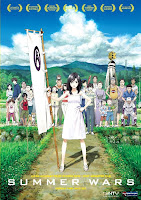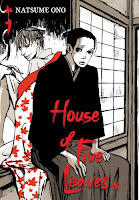 And the winner of the Nausicaä manga giveaway is…Stephanie!
And the winner of the Nausicaä manga giveaway is…Stephanie!
As the winner, Stephanie will be receiving the first seven issues of the original English translation of Hayao Miyazaki’s Nausicaä of the Valley of the Wind. Over the years, Nausicaä has been published in English in five different formats, which got me to thinking about the various ways that manga is released. And so for this giveaway, I asked entrants to give me their opinions on the different formats of manga. I’ve excerpted some of the responses here, but there’s plenty more in the Nausicaä Giveaway comments. I enjoyed reading about everyone’s preferences—there was a nice variety—so thank you for sharing!
Magazines!
The magazine format was nice while it lasted (since it introduced me to a number of titles I otherwise would’ve ignored), but with Shonen Jump‘s demise and Viz’s rush to make everything popular digital (good luck with that), there’s no manga magazine currently in existence stateside, which means, sadly, this format is now obsolete.
~Ben Jonas
Single Issues!
For some reason I’m very partial to English single issues of manga, such as Sailor Moon and the Pokemon manga, but I’ve never been a fan of collecting the monthly Japanese “phonebooks,” really.
~apricotsushi
Individual Volumes!
I prefer individual volumes of my favourite manga so that I have a choice of beautiful cover art to show off in my room, almost like an accessory to the overall design! […] However, I don’t just let the volumes sit around for looks… I find sitting down with an actual physical copy of a book so much more relaxing and easy on my eyes than viewing manga in digital formats.
~T. Gantt
Oversized!
I personally prefer my manga in as close to the Japanese release as possible, so standard sized graphic novels/collections are best…but I also kind of like slightly oversized ones because you get to see all of the artwork larger and more close-up. (I’d much prefer oversized than the teeny pocket-sized books some companies have released over the years.)
~Dawn H
Omnibuses!
Personally, I prefer my manga in omnibus hardcover format. A hardcover lasts much longer and feels much better to hold and read, and omnibuses allow for getting series faster and cheaper too.
~
Box Sets!
I definitely have a soft spot for box sets and hardcovers, though those aren’t as common, so I don’t have as many of them. I also love volumes that have a slipcover or colored pages. The fancier, the better, I guess.
~KenshinGirl
Digital!
I’ve found digital manga sites like J-manga to be another regular haunt and why not – with the sheer volume of titles coming out in japan on a yearly basis, it simply wouldn’t be possible for manga companies to release all of them in the west and get any kind of return from them […] and so for me the only way to legally see many of these titles with out learning the language is via this route.
~Chou Dori
And that’s it for the Nausicaä Giveaway! There was a great turnout this time around; I hope to see you all again for November’s giveaway!
















